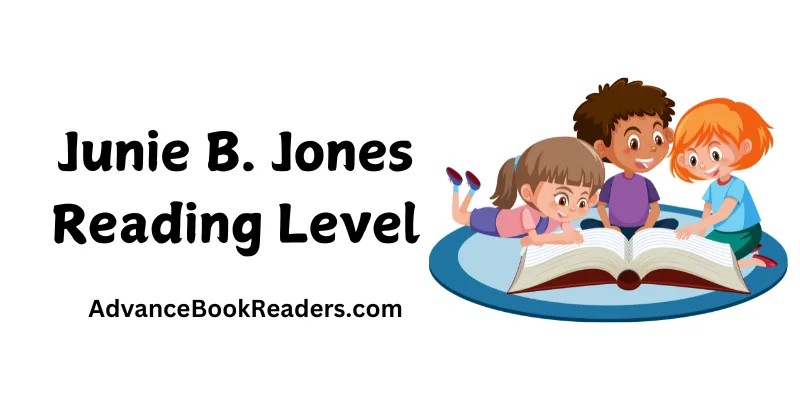Junie B. Jones is a beloved book series that introduces young readers to the joys of chapter books. Penned by Barbara Park, these books chronicle the hilarious escapades of Junie, a spirited young girl navigating the ups and downs of school and home life. Her bold personality and the amusing situations she encounters resonate with many young readers. If you are a parent or educator looking for engaging books for early readers, understanding what guided reading level is Junie B. Jones will help you determine if this series is the right fit for your child.
Exploring the Junie B. Jones Series
Junie B. Jones is a memorable character known for her curiosity, humor, and occasional mishaps. Her unique perspective and unfiltered thoughts are central to the series’ appeal.
The books often revolve around everyday school experiences, such as making friends, following rules, and sometimes getting into minor trouble. This familiarity allows young readers to easily connect with Junie’s experiences, making the books relatable and engaging.
Children are drawn to the Junie B. Jones series because of its humor and relatable themes. By presenting school life through a child’s eyes, the books make reading an enjoyable and accessible activity for young minds.
Decoding the Junie B. Jones Reading Level
Understanding the reading level of Junie B. Jones books is essential for selecting appropriate reading material for children. Here’s a breakdown of various reading level measurements:
1. Lexile Level
The Junie B. Jones series typically falls within a Lexile range of 250L to 500L. The Lexile framework assesses the complexity of a text, ranging from 0L for beginning readers to over 1600L for advanced readers.
A Lexile level of 250L to 500L indicates that Junie B. Jones books are suitable for children transitioning into chapter books but still require manageable vocabulary and sentence structure. This Lexile range generally corresponds to children in 1st to 3rd grade.
2. Accelerated Reader (AR) Level
The Accelerated Reader (AR) system assigns Junie B. Jones books an AR level of 2.0 to 3.0. The AR level signifies the grade level at which a child should be able to read the book independently. An AR level of 2.0 to 3.0 suggests that these books are appropriate for children in 2nd to 3rd grade. Educators and parents often use AR levels to guide children in selecting books that are neither too challenging nor too simple.
3. Grade Level Equivalent
The grade level equivalent for Junie B. Jones books typically spans from 1st to 3rd grade. This designation suggests that the content and vocabulary align with what children in these grades can comprehend and enjoy. The grade-level equivalent provides a practical guideline for matching books to a child’s reading proficiency.
4. Fountas & Pinnell Level
The Fountas & Pinnell system categorizes books from levels A to Z, with A being the simplest. Junie B. Jones books generally range from levels M to O, common for early elementary readers. Fountas & Pinnell levels offer a structured approach to selecting books that align with a child’s reading progression, ensuring a balanced reading experience.
5. Developmental Reading Assessment (DRA)
The Developmental Reading Assessment (DRA) system is widely employed in schools to evaluate reading levels. In the DRA, Junie B. Jones books are typically rated DRA 18 to 28. This range is well-suited for children beginning to read short chapter books independently, often around 1st to 3rd grade. The DRA level aids in gauging a child’s reading fluency and comprehension, providing valuable insights for teachers to support reading advancement.
These reading levels—Lexile, AR, Grade Level Equivalent, Fountas & Pinnell, and DRA—offer a comprehensive understanding of the suitability of Junie B. Jones for young readers. Each system enables parents and educators to align the book with a child’s reading capabilities, making the series an excellent choice for early elementary grades.
Suitable Age Range for Junie B. Jones
The Junie B. Jones series is ideally suited for children aged 6 to 9 years old. The language and themes in the books are easily accessible for this age group. The books use simple vocabulary and short sentences, which correspond to the reading abilities of children in early elementary school.
The humor in the books is also tailored for this age range. Junie B.’s funny errors and unique perspectives appeal to children. The stories also focus on topics like school, friendships, and family, which are highly relatable for children in this age group.
Book Series at Similar Reading Levels
If your child enjoys Junie B. Jones, exploring other series with comparable reading levels might be beneficial. Here are some similar book series that appeal to young readers with similar levels and themes:
1. Captain Underpants
Captain Underpants is another popular series known for its humor and lighthearted storytelling. Similar to Junie B. Jones, it features simple language and straightforward plots. However, Captain Underpants includes more illustrations, making it ideal for visual learners and children who are just beginning to read chapter books. The series is often suited for readers in 2nd to 4th grade, with an AR level close to 3.0 to 4.0.
2. Dog Man
The Dog Man series is another favorite among early readers. This series is a graphic novel, using illustrations to tell the story, similar to a comic book style. Dog Man appeals to young readers with its humor, visual storytelling, and unique characters. While sharing a similar easy-to-read style with Junie B. Jones, Dog Man books often have a higher Lexile level, around 390L to 700L, making it suitable for 2nd to 4th graders who enjoy action-packed stories.
3. Wings of Fire
For children ready for a more challenging series, Wings of Fire introduces a fantasy world of dragons and adventure. With a Lexile range around 700L to 900L, Wings of Fire is best suited for more advanced young readers, typically 3rd to 5th graders. While more complex than Junie B. Jones, children who enjoy fantasy and adventurous storytelling might find it a great next step in their reading journey.
4. Percy Jackson and the Olympians
If your child is progressing towards longer chapter books, Percy Jackson and the Olympians could be a good choice. Percy Jackson introduces mythology and adventure in a way that’s both engaging and challenging for young readers. This series has a Lexile level of around 680L to 880L, making it suitable for readers in upper elementary grades, usually 4th grade and up.
Selecting books that match your child’s reading level is crucial for fostering a love for reading. Junie B. Jones and similar series like Captain Underpants, Dog Man, Wings of Fire, and Percy Jackson offer a variety of reading levels and themes to keep young readers engaged and entertained.
Benefits of Reading Junie B. Jones
Here are several benefits of reading the Junie B. Jones book series:
1. Vocabulary Development
Junie B. Jones books are excellent for building vocabulary. The language is simple but introduces new words in context, helping young readers expand their vocabulary while enjoying a fun and engaging story.
2. Engagement in Reading
The humor and funny situations in Junie B. Jones keep young readers engaged. Children enjoy Junie’s silly mistakes and unique way of seeing the world. The stories are also relatable, focusing on common experiences like going to school, making friends, and dealing with problems at home.
3. Social and Emotional Growth
The series also helps children develop socially and emotionally. Through Junie’s adventures, young readers learn about friendship, problem-solving, and how to navigate challenges in school and at home. The books provide an opportunity to reflect on their own emotions and relationships.
Potential Challenges for Young Readers
Here are some potential challenges young readers might encounter:
1. Language Style
One challenge is Junie’s unique grammar and language. Her use of incorrect grammar, such as saying “I seen it” instead of “I saw it,” can be confusing for children learning proper grammar. Parents and teachers may need to explain these language differences and help children understand why Junie speaks the way she does.
2. Behavior and Role Modeling
Junie’s behavior can sometimes be another issue. She occasionally breaks the rules or becomes easily frustrated, which may not always be the best example for children. Discussing Junie’s actions can help children learn appropriate ways to solve problems and manage their emotions.
Tips for Parents and Educators
Here are some useful tips for parents and teachers:
1. Support for Developing Readers
Reading Junie B. Jones with your child can be a fun and effective way to support their reading development. Parents can read together, helping with difficult words and phrases. Discussing the story and asking questions can also help ensure comprehension.
2. Guided Reading and Comprehension
Asking questions while reading can enhance your child’s comprehension. For example, ask them how they think Junie will solve a problem or how they would act in her situation. This encourages deeper thinking and improves understanding of the story.
3. Discussing Junie’s Actions
Since Junie sometimes breaks the rules or acts out, discussing her actions is a good idea. Parents and educators can encourage children to think about why Junie makes certain choices, teaching them about making good decisions and understanding the consequences of their actions.
Conclusion
The Junie B. Jones series is a delightful and accessible option for young readers. Its simple language, relatable humor, and engaging school-life adventures appeal to children aged 6 to 9. The books also contribute to vocabulary, comprehension, and social-emotional growth. While there may be minor challenges like Junie’s grammar and behavior, these can be valuable opportunities for discussion and learning. Overall, Junie B. Jones is an enjoyable series that supports the development of essential skills in young readers.
FAQs
Here are some frequently asked questions about the age range and reading level of Junie B. Jones:
What is the reading level of Junie B. Jones?
Junie B. Jones books are generally suited for children aged 6-9, with a Lexile measure of around 300L to 500L, making them ideal for early readers in 1st to 3rd grade.
What age group is Junie B. Jones suitable for?
Junie B. Jones is perfect for children aged 6 to 9 years old. The stories are engaging and easy to follow for young readers.
Are Junie B. Jones books good for new readers?
Yes, the simple language and humorous situations in Junie B. Jones make it a great choice for children who are just starting to read on their own.
How can Junie B. Jones help my child improve their reading?
The series helps build vocabulary, reading comprehension, and social skills through relatable stories, humor, and everyday situations.
What are the challenges of reading Junie B. Jones?
Some young readers may find Junie’s quirky grammar and behavior a bit tricky. It can be helpful for parents or teachers to discuss these with kids as they read.

